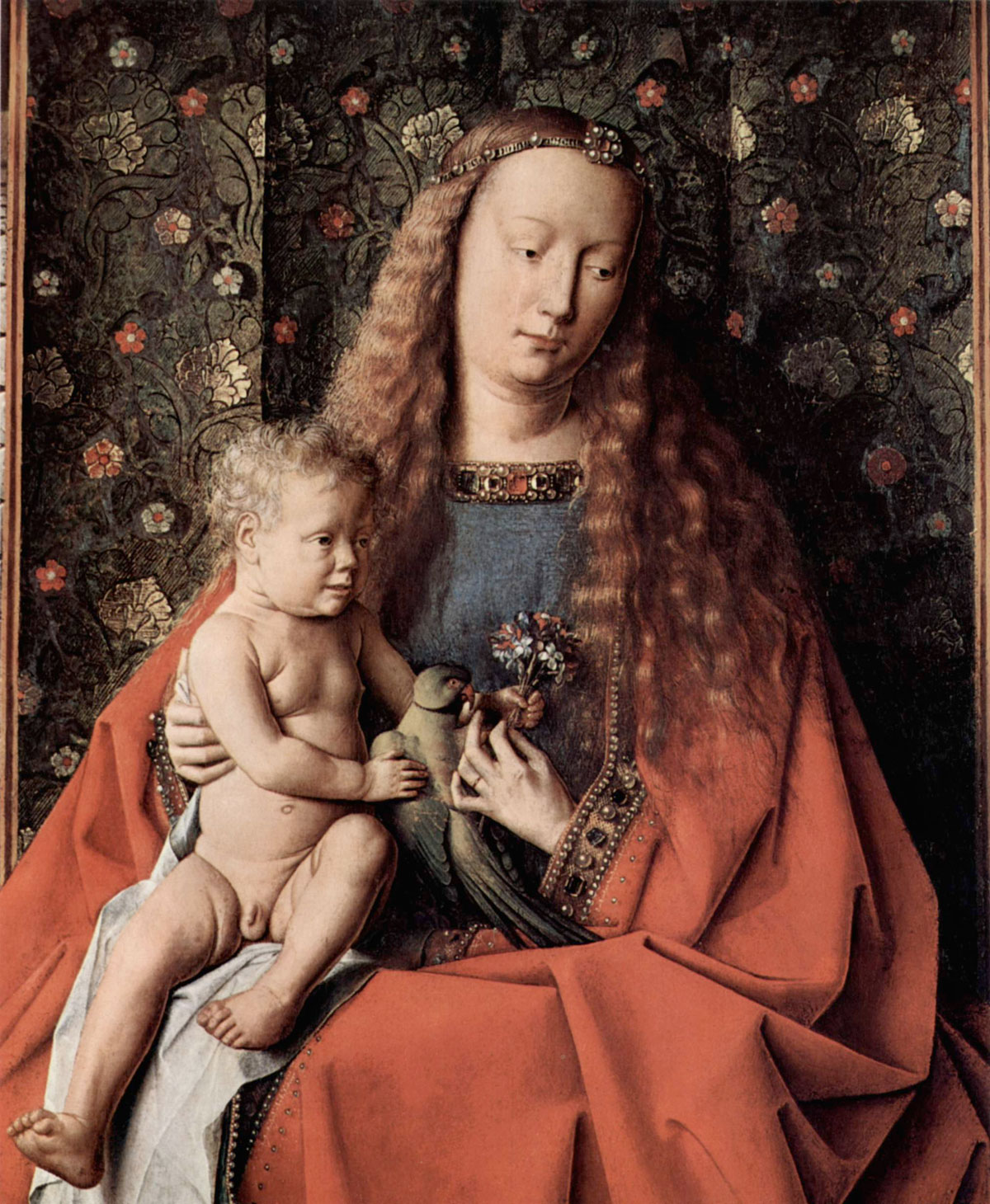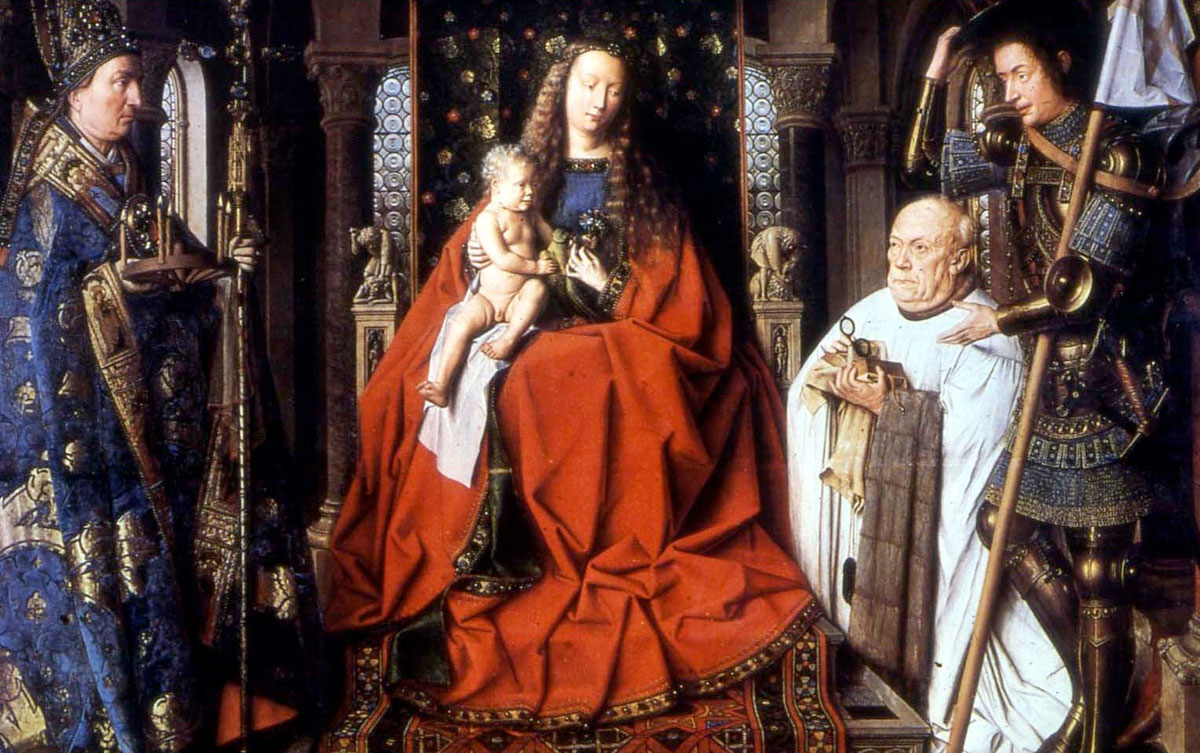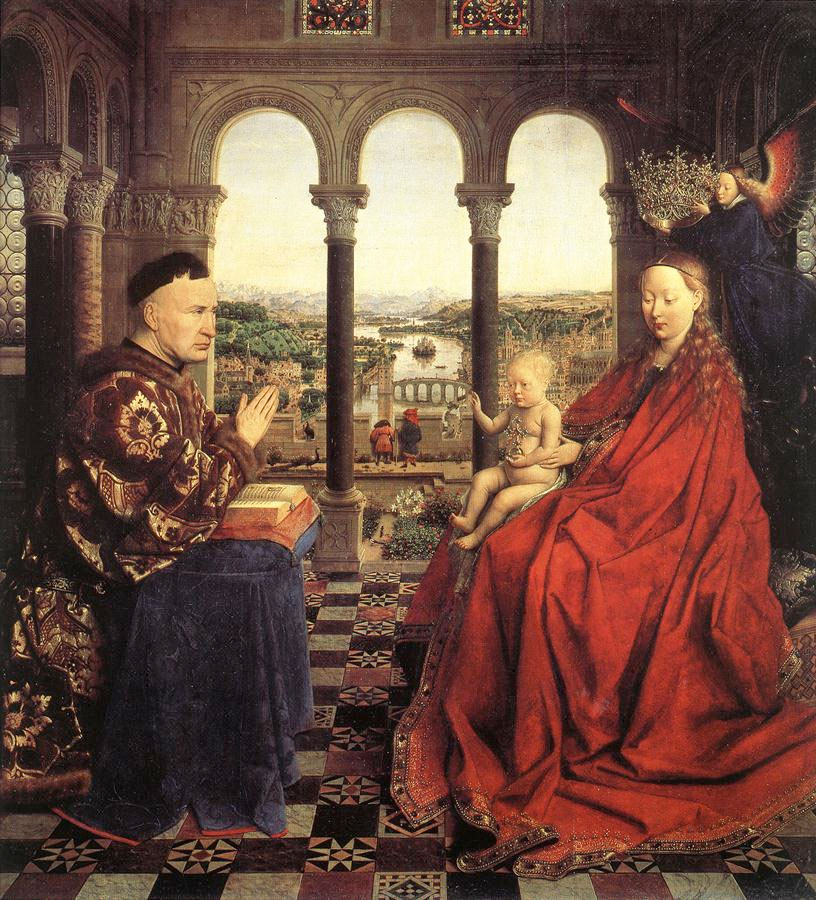
Jan Van Eyck,"The Madnna with Canon Van der Paele" (detail), Oil on wood, 1436
JAN VAN EYCK
(before c. 1395 – before July 9, 1441) was an Early Netherlandish painter active
in Bruges and considered one of the best Northern European painters of the
15th century.
There is a common misconception, which dates back to the sixteenth-century Vite of the Tuscan artist and biographer Giorgio Vasari, that Jan van Eyck invented oil painting. It is however true that he achieved, or perfected, new and remarkable effects using this technique. Thus, due to his early mastery of the technique, he has often been referred to as the "father of oil painting."
Jan van Eyck has often been linked as brother to painter and peer Hubert van Eyck, because both have been thought to originate from the same town, Maaseik in Limburg (Belgium). Another brother, Lambert van Eyck is mentioned in Burgundian court documents, and there is a conjecture that he too was a painter, and that he may have overseen the closing of Jan van Eyck's Bruges workshop. Another significant, and rather younger, painter who worked in Southern France, Barthélemy van Eyck, is presumed to be a relation.

Jan Van Eyck,"The Madnna with Canon Van der Paele" (detail),
Oil on wood, 1436

Jan Van Eyck, "The Madnna with Canon Van der Paele" ,
Oil on wood, 1436

Jan Van Eyck, “The Virgin and Child with Chancellor Rolin” , Oil on
wood, 1436